Now & New
- Explore
One if by Land, Three if by Sea, Part Four: Rabbit Island in a Typhoon
Summer in Japan is a season full of rainy days, with an expected rainy season in June (which spills into July) and a typhoon season that mostly happens in September (but has recently been starting earlier). Climate change might have something to do with it, but the weather in August has been getting wackier year and year, and I knew the risk I was taking when I booked three nights in Mihara. Nevertheless, life (especially travel) is more fun taking small gambles like these, and after the good times I had over the past three days watching a dance parade, biking on a tranquil island, and seeing some magnificent artwork, I figured that no typhoon would rain on my vacation.
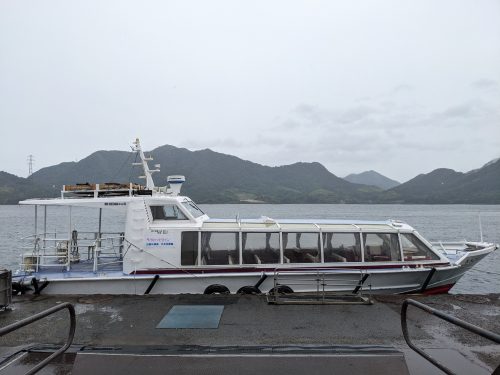
The two remaining stubs on my excursion ticket set were for the Habu Merchant Ship Rabbit Line, a ferry line bound for Okunoshima that normally operates only on weekends and public holidays, but has special operating hours during Obon. This Tuesday, the 15th of August, was not only the last day for me to use my tickets, but also the last day of the aforementioned special hours of operation, so I was determined to make the journey, rain or shine.
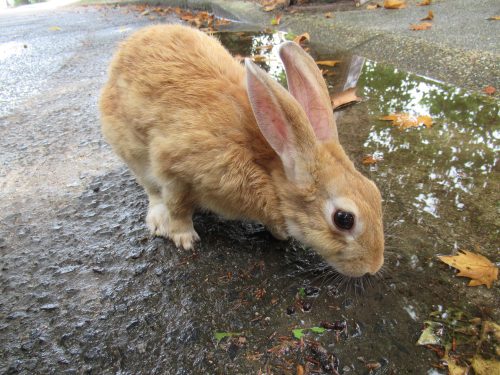
True to its word, the Rabbit Line was operating in spite of the typhoon, but we were warned before boarding that if the typhoon got worse, the ferries could stop running and leave us stranded with the bunnies. If we were still keen on going, they advised we shoot for one ferry earlier than the one we intended to ride back, just in case. This meant that we would barely have time on Okunoshima, and those hoping for a full day of enjoying the company of feral rabbits were better off going on another day. We stood there at the pier for a minute in silence, contemplating whether to gamble with our summer break plans, until I finally spoke up.
“I’ll go.”
The others at the pier instantaneously followed suit, and before we were guided onto the ferry, they reminded us of the return times least likely to be interrupted by the typhoon. We gave our tickets to the boatman and took our seats, ready to let Mother Nature decide our fates that day. As a silver lining of sorts, we were at least safe from the rain inside the boat cabin as we crossed the Seto Inland Sea to an island where we would end up wet anyway.
Rainy Trails
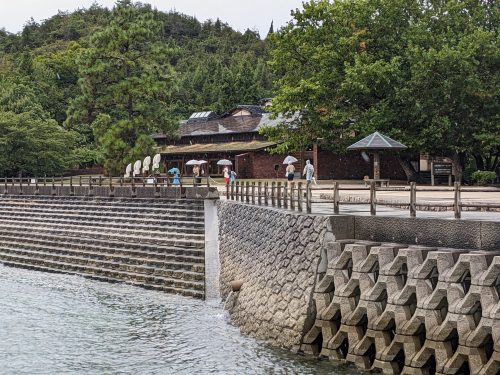
When we got to the pier on the south side of Okunoshima, the scenery was exactly as expected: gloomy with tourists struggling to simultaneously hold umbrellas and cameras. The amount of rain was a bit aggravating, but normal considering a typhoon was passing through West Japan. As can be seen from the pictures, raindrops got in the way of whatever I was photographing, and pointing my camera from under my umbrella was a balancing act of keeping my lens dry and preventing photobombs from my own parasol.
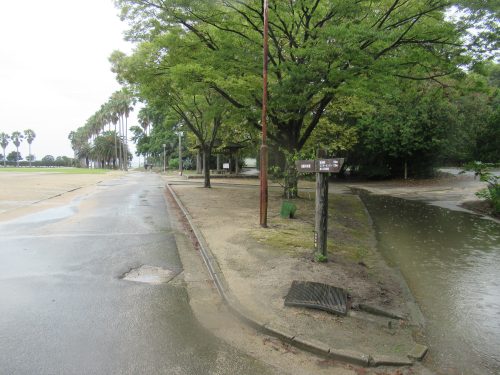
To add to the chaos, the excessive precipitation created puddles in the walking paths, and since I didn’t bring my galoshes, I had to tread carefully around the island. My first course of action was to head to Kyukamura Okunoshima, the island’s resort and only place to dine. Unfortunately, the lucky timing I had with the resort’s shuttle bus back on Easter Sunday didn’t transfer to today, when I needed it more.
Kyukamura Shelter
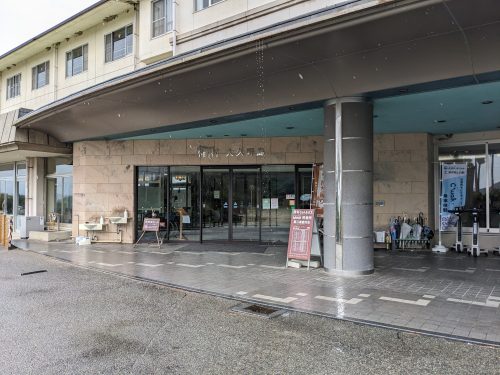
Thankfully, it was only a short trudge to Kyukamura Okunoshima, but my drenched footwear may beg to differ. I shielded myself from the rain falling from the roof as I entered the building, then made a beeline for the café to grab some lunch with every other hungry tourist also hunkering down. The café menu has an extensive lineup, but not many items suited my palate save for the Hamburg steak lunch, which was a good deal and one of the more substantial choices. I was a little confused by the order process, thinking that purchasing the ticket would be reflected in their computer system and have them automatically start making my order. It wasn’t until I had been sitting at a table for a while and never hearing my number called that it dawned on me and I felt like a klutz.

Shortly after handing my ticket to the staff behind the counter, my order was announced, and I was well past ready to dig in! My lunch consisted of a Hamburg steak drizzles with ketchup, some French fries, one bowl’s worth of steamed rice, a side salad with sesame dressing, a bowl of onion-flavored consommé soup, a cup of orange drink, and some lemon-flavored jelly for dessert. The soup was highly welcome on this chilly, rainy summer day, and while the Hamburg steak tasted like any other I’ve had in Japan, the volume of the whole meal was appreciated that day and helped me in taking my sweet time as I waited for the rain to subside.
Moment of Joy: Winning My Bet
As luck would have it, the rain stopped shortly after I finished my meal, as if Mother Nature was beckoning me to head out and resume my summer vacation. The sky was still gray, but with everything drying up, taking pictures became easier and my photos were looking prettier. To think that I could’ve turned down this adventure on account of a typhoon, I’m glad that I’m not afraid of taking risks like this one when I travel. I felt so victorious and relieved after having won this gamble, and the rest of my day on Okunoshima only got more exciting from here on out.
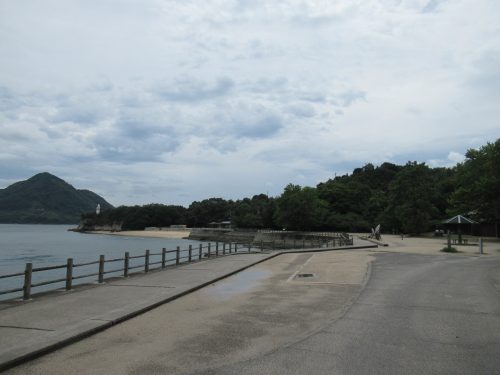
Wet Wilderness
Though the rain had stopped, puddles lingered and the trails were still too wet for hiking around the island. I figured it was best to remain in the vicinity of the pier and play with the rabbits there, which is the number one thing visitors to Okunoshima do anyway. Near the southern coast are these devices that allow humans to hear the same way rabbits do when they stand underneath the headpiece. Families, couples, basically any tourists with time on their hands stopped to check it out, including yours truly. The device wasn’t too wet and the sound of the air around me was indeed amplified, but I got bored with no bunnies around so I called it quits early.
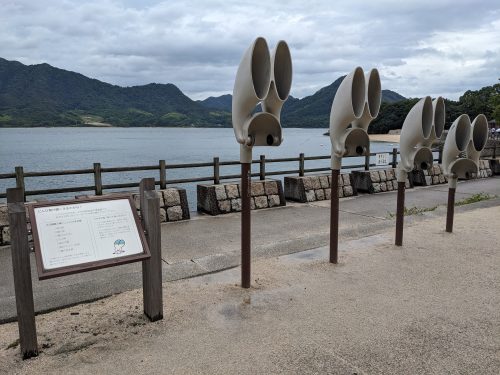
Between the pier and Kyukamura Okunoshima also lay the Poison Gas Museum, which I pass by every time I come, but almost never visit. It’s a small museum outlining the history of the manufacture and use of poison gas on Okunoshima, with real documents, gas masks, and other cool stuff from the era. Regrettably, photography is forbidden inside the museum, so all I have to show for it is its red brick exterior. Oh, well, there weren’t any rabbits inside anyway, so I had better places to visit.
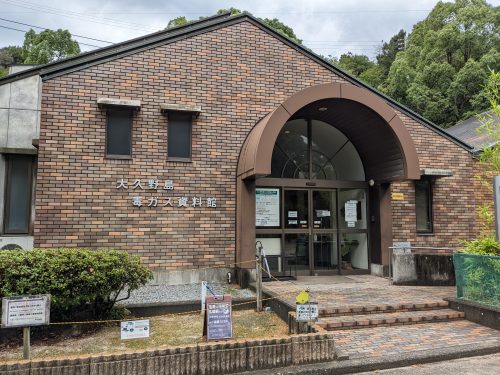
Typhoon or no, the rabbits on Okunoshima are always ready to interact with the human visitors, and since so many tourists bring food for them, they equate us with feeding time and hastily run up to every human they see when their tummies rumble. As I’ve stated in other articles, it’s really not necessary to bring one’s own vegetables or buy pellets from the shop at Tadanoumi Port as so many stray cabbage leaves are strewn about the grassy areas. Another thing to note is that in spite of their penchant for eating from humans, the bunnies are perfectly capable of feeding themselves by eating the wild plants on the island. A considerable portion of them starved to death during the COVID-19 pandemic, but rabbits, being rabbits, held fast and repopulated the island without difficulty. That said, I didn’t feel so bad showing up to Okunoshima empty-handed that day, and when I couldn’t find any stray cabbage, I picked random leaves off the ground and tested them to see if they were yummy to the rabbits. This one here proved to be unpopular, but it was funny to see one rabbit after another try the same leaf even though the outcome was the same.
Speaking of plants, the flowers on some of the trees were still intact and blooming strong. If anything, the lingering water droplets on their petals made them even more beautiful. This one was surrounded by buds, which meant that the tree would probably look pinker as a whole in about a few weeks or so.

Okunoshima Visitor Center
In all my visits to Okunoshima since moving to Japan, today was my first time dropping by the visitor center. I’m sure I’m not the only one who has overlooked it time and again, as we all want to hurry to the bunnies, don’t we? Honestly speaking, if not for the typhoon, I would’ve passed on this place, but going inside to check it out was a wise move that almost made me thankful for the inclement weather that day.

The most entertaining object inside the Okunoshima Visitor Center would have to be this structure called the “Music Tree,” which is completely free to play with. Visitors simply turn the black crank rapidly, and the red LED display shows how much electricity is generated by the motion. As one turns the crank, a mechanism raises little wooden balls to the top of a slide, and once a ball starts rolling down the course, it hops down a series of wooden steps which act like a xylophone, hence the “music” part of the tree scene.
Like any other visitor center, this visitor center also educates people on the area they’re visiting. The building is filled with models, plaques, and realia that illustrate the natural history of Okunoshima, and the winding stairs and slopes make the experience more child-friendly. I was personally impressed by the collection of local shells and coral they had on display.
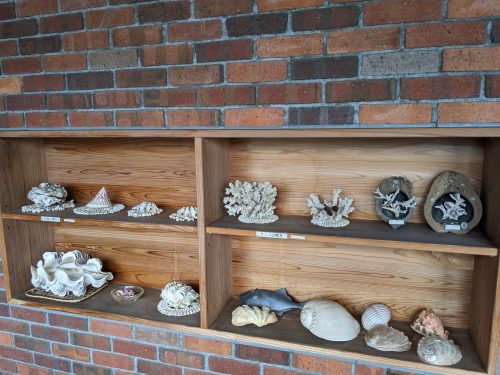
I could’ve stayed for longer, but figured that this was as much fun as I was going to have on Okunoshima during a typhoon. Since there was no more inclement weather, the return ferry showed up right on schedule, and because the southern pier for Mihara-bound boats is used less than the eastern pier for Tadanoumi-bound ferries, I didn’t have to wait in a monster of a line like I usually do. Tourists who come from Mihara can look forward to a variety of dining options back in the city center, or hold off until returning to Hiroshima Station for an even wider variety.
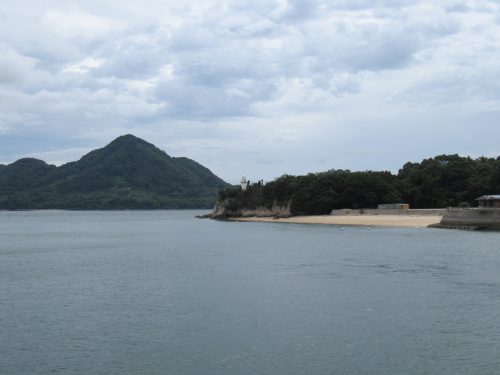
My time in little old Mihara was four whole days long, but with a separate excursion each day (sometimes riding multiple ferries), my Obon break went by in the blink of an eye. As a resident of Hiroshima Prefecture, I am delighted to know that such an adventure is available so close to home, but then again, the Seto Inland Sea isn’t a tourist destination to be underestimated in the first place. In fact, I had so much fun using my excursion ticket set these past few days that I feel inclined to try it again another year, in another season.
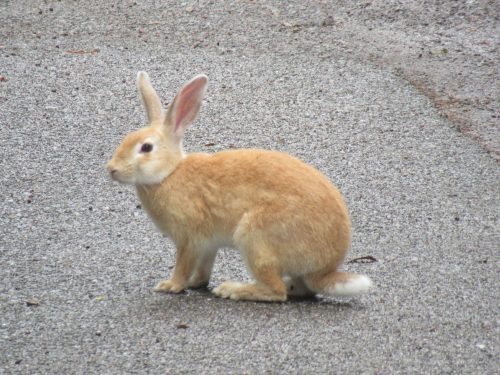
Looking back, I feel like I was traveling with some sort of invisible rabbit’s foot considering the fortunate turnarounds I had in spite of minor setbacks each day. No typhoon, missed ferry, or closed shop shall ever put a damper on my travel plans so long as I keep moving, constantly in search of cool places to discover. I have the Yassa Festival in Mihara to thank for my Setouchi escapades, which goes to show that no matter what city—big or small—you visit in Japan, if it has a coast, petit island outings like the three I went on are almost always a possibility. Trains are great, but ferries take you farther than one might expect; so much so that I think ought to coin some sort of mantra: for every excursion one can have on land, it is also possible to have three by sea. Next summer, if you feel like you’re running out of places to visit in Hiroshima Prefecture, hop on a ferry at any city’s port and witness the potential of a maritime excursion.
Written by the Joy in Hiroshima Team
